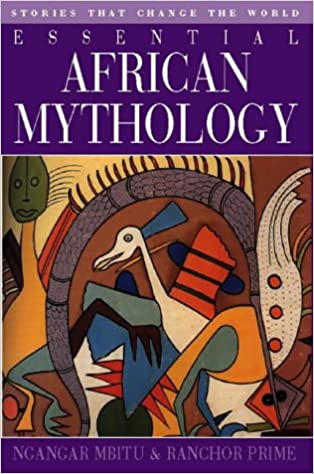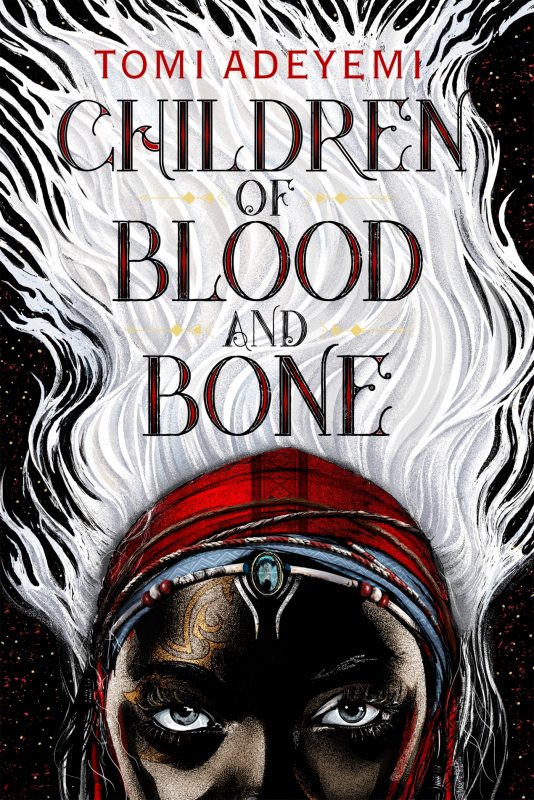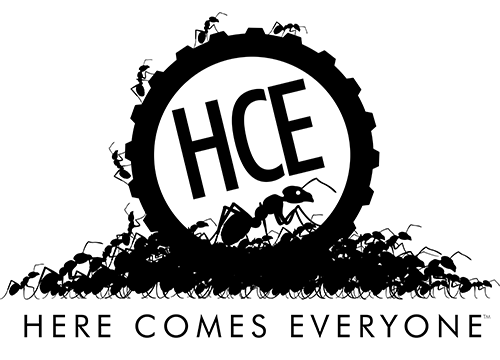African Mythology: Gods and Monsters
By Eve Volungeviciute
We are almost done with our virtual trip around the world! This time, we are heading to a warmer climate to take a look at African mythology; their folklore, creation myths and deities, as well as monsters. Without further ado, shall we begin?
Central
Baluba
According to Baluba mythology, their creator deity’s name is Kabezya-Mpungu. Their creation myth connects God’s unavailability with the humans longing for him. In the story, Kabezya-Mpungu becomes invisible after creating the world and its first humans, who did not have a heart at that point. In order to replace himself, he sends Mutshima (“heart”) to earth, which is what, according to him, makes humans divine.
Kongo
This faith originated in Bantu region in the southern half of Africa. It’s based around the idea of the main creator god Nzambi Mpungu who made the world and the sprits in it. Nganga – priestly doctors – are there to heal the mind and bodies of the followers. Like many other regions, according to Kongo beliefs, the universe is split between the worlds of the living and the dead, which are separated by a body of water.
There are tons of recordings on Kongo religion in Christian missionary files, but a historian John K. Thorton states that their credibility is questionable due to the hostile bias in which they were written. Their traditions are believed to have been best defined in the northern Kikongo-speaking area.
Kongo people believed that, after death, a person’s soul leaves the body to become a ghost and enter Kalunga, the land of the dead. Those who have committed sinful acts in life cannot enter this land and are subjected to roaming the Earth for eternity, which could be considered similar to the Christian idea of Purgatory.
East
Dinka
Located in South Sudan, Dinka people believed in the supreme creator god Nhialic who ruled all the other spirits. He was believed to be in control of destiny of all humans, animals and even plants on Earth, although he rarely included himself in the world’s affairs.
While there are several versions of the Dinka creation myth, it mainly focuses on the creation of humans, Garang and Abuk being the first ones of their kind. In some instances, Nhialic created humans by blowing them out of its nose, others say humans originated from the sky and were placed in the river where they fully formed as adults, while there are also versions that state humans were born out of clay and matured in pots.
Otuho
Also known as Latuka, their primary religion is mainly based on nature and ancestor worship. Otuho people took their identity very seriously – converting to another religion basically meant cultural assimilation in their minds. The chief god of the Otuho is Ajok and is mostly described as kind, although can be angered depending on circumstances. In what could be described as a creation myth, Ajok answered a prayer of a woman who wished for her son to be resurrected. However, her husband did not approve of this and killed the child again, which angered Ajok who then made a vow to never resurrect an Otuho again, which led to death for humans becoming permanent.
North
Berber
One of the regions which were quite heavily influenced by other religions. Berbers took great care of their dead, the bodies buried with ostrich eggs, jewellery and weapons. They were also mostly in foetal position and painted with ochre (a clay pigment). They also participated in what was called cult of the dead, considering the spirits of their ancestors to be gods. After consulting them on matters, they would sleep in their ancestor’s tomb in order to receive responses in their dreams.
Berbers worshipped kings too, with the tombs of Numidian kings being their most prominent monument.
Southern
Malagasy
Traditional Malagasy mythology refers to Zanahary, a creator deity and the division of Heaven and Earth between him and his son Andrianerinerina, who was a frequent source of worship for the people. Malagasy were mostly polytheistic, worshipping a wide variety of entities.
Ancestors play a huge role in their folklore, usually seen as kind and genuine figures. However, if they are ignored, some spirits may become angatra (ghosts of the dead) and bring disease or misfortune to those who taunted them. Kinoly is a particularly nasty type of angatra – they look like people but have red eyes, long fingernails and disembowel the living.
Zulu
The traditional religion of Zulu worships various deities, commonly associated with animals or natural phenomena. Unkulunkulu is regarded as the highest god, as well as the creator of humanity. He is also called uSomandla, which means the ultimate source of all existence.
Some other deities include Nomhoyi, the goddess of rivers; Nomkhubulwane, the goddess of the rainbow, agriculture, rain and beer (which she also invented according to the myth); and Sonzwaphi, the deity of healing. They’re also not short of more menacing creatures, such as Inkanyamba, a carnivorous animal with an eel-like body and equine head, who can control the weather and are able to grow to a pretty impressive size. There is also Tikoloshe, a gremlin who can turn invisible by swallowing a pebble. They are mean-spirited, bringing harm and illness to anyone they come across.
West
Dogon
Dogon people were one of the last in the West Africa region to lose their independence and come under the French rule. The most important spiritual figures in the religion were the Nummo/Nommo twins. Also referred to as the Serpent, the Nummo were amphibians (fish able to walk on land). They were also called “Water Spirits”. Interestingly, they were symbolised by the sun and the colour red, both female symbols according to the culture.
Yoruba
Yorubas have evolved a robust cosmology, meaning it believes all humans possess something known as “Ayanmo”, which more or less means destiny or fate. According to their beliefs, each person eventually becomes one with Olodumare, the divine creator of the universe, their thoughts and actions in the physical realm interacting with other living beings and the Earth itself. Followers also try to achieve perfection during their lifetime in order to get into the spiritual realm Orun-Rere, which is reserved for people who do good things.
Miscellaneous
I could not wrap this article up without mentioning a couple of other monstrous creatures from different regions. The Groostlang is ‘a great snake’ that can grow up to 60 feet length, lives in Richetsveld area of South Africa. Since the gods deemed it too deadly, they came up with a plan to separate its intelligence and powers across the two species of elephant and snake. However, legend claims that a couple of Groostlangs escaped and reproduced.
There’s also Adze, a vampire from the legends of the people of Ghana and Togo. The Adze is usually in an indestructible firefly or insect form but, if captured, it will assume a quasi-human form. When it shapeshifts, it can attack you and eat your organs – which is bad enough, but as an insect, it can suck your blood while you’re asleep and spread diseases. (This folklore is believed to have evolved over time, to warn people about the dangers of malaria-carrying mosquitoes.) Victims of the Adze become a witch possessed by its spirit, and eventually die of sickness.
Some recommended reading for people who wish to explore these topics further:
 African Mythology: Gods, Heroes, Legends and Myths of Ancient Africa by Jim Barrow
African Mythology: Gods, Heroes, Legends and Myths of Ancient Africa by Jim Barrow
Essential African Mythology: Stories that Change the World by Ngangar Mbitu
African Myths and Egyptian Gods: A Captivating Guide to African Mythology and Gods of Ancient Egypt by Matt Clayton
African Folktales: Traditional Stories of the Black World by Roger D. Abrahams

Fiction books:
Children of Blood and Bone (Legacy of Orïsha, #1) by Tomi Adeyemi
Kingdom of Souls (Kingdom of Souls, #1) by Renna Barron

